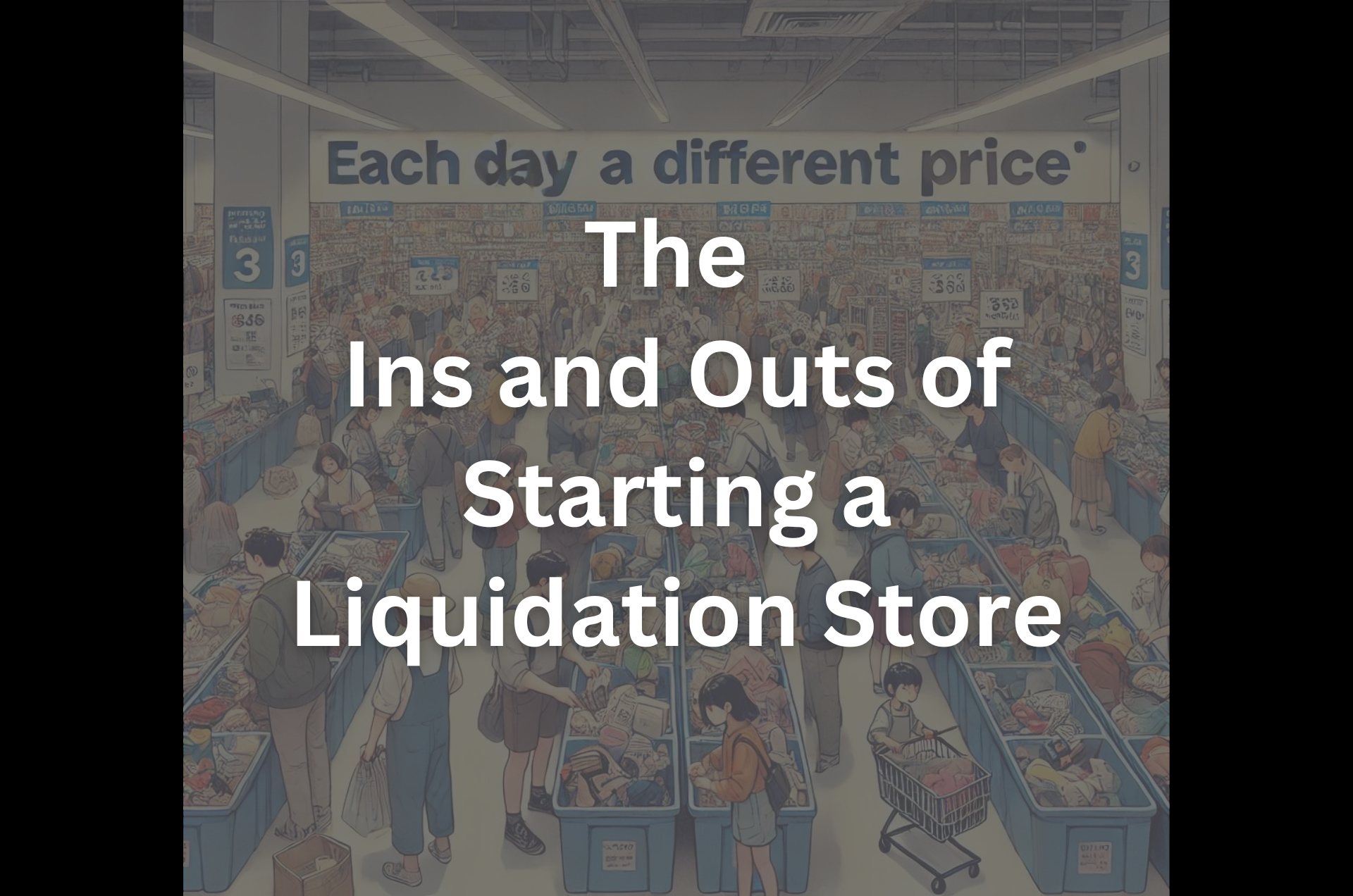**Disclosure:** We believe in honesty and transparency to the fullest extent. Some of the links on this blog are affiliate links, meaning, at no additional cost to you, we will earn a commission if you click through and make a purchase. This is one of the simplest ways you can support us.

Have you ever dreamed of running a retail business where you offer customers amazing deals on a wide variety of products? If so, a liquidation store might be the perfect venture for you. Liquidation stores buy truckloads of merchandise from various sources, such as overstock, closeouts, and customer returns from companies like Amazon, and sell them at discounted prices. In this article, we’ll explore how to start a liquidation store and the secrets behind its successful pricing strategy.
Understanding the Liquidation Business Model
Liquidation stores offer customers the thrill of finding discounted items from a variety of categories. The business model is based on purchasing merchandise in bulk from various sources, such as Amazon returns, overstocked inventory, or closed-down stores. These items are often sold at a discounted price, creating an opportunity for savvy entrepreneurs to establish a lucrative business.
One of the key aspects of liquidation stores is the pricing strategy. Items are typically priced at a certain level when they first arrive in the store. As days pass, the price decreases, encouraging customers to purchase items sooner rather than later. This pricing strategy creates a sense of urgency and motivates customers to visit the store frequently to snag the best deals.
Companies like Amazon that handle fulfillment for merchandise will charge merchants to receive merchandise that did not sell or that the owners want back. For many merchants, it’s cheaper to just allow Amazon to get rid of the merchandise. This creates a surplus of pallets and truckloads of returned or discontinued items that liquidators can purchase and resale.
Retail Sales from Liquidation: The liquidation industry is significant, with an estimated $644 billion worth of inventory being liquidated annually in the U.S. alone.
Consumer Behavior: Over 85% of U.S. shoppers have purchased a returned or discounted item from a liquidation store, showing strong consumer interest in discounted merchandise.
Profit Margins: Liquidation stores often achieve profit margins ranging from 30% to 70%, depending on the type of merchandise and the efficiency of their pricing strategy.
Who Is This Business Best For?
Starting a liquidation store can be a rewarding business venture for individuals with an entrepreneurial spirit and a keen eye for finding great deals. This business is particularly suitable for:
Retail enthusiasts: If you have a passion for retail and enjoy interacting with customers, a liquidation store provides an opportunity to combine your business acumen with your love for the industry.
Value seekers: Individuals who have a knack for finding bargains and reselling items at a profit will find a liquidation store a natural fit.
Experienced entrepreneurs: Those with experience in running retail businesses or managing inventory can leverage their expertise to maximize the success of their liquidation store.
How to Get Started with Your Liquidation Store

Research and Education: Familiarize yourself with the liquidation industry and its various sources of merchandise. Research different liquidation companies and platforms to find reputable suppliers. Additionally, attend industry events and workshops to gain insights from experienced professionals.
Create a Business Plan: Develop a comprehensive business plan that outlines your vision, target market, pricing strategy, marketing approach, and financial projections. A well-crafted business plan will provide a roadmap for your journey.
Find a Suitable Location: Choose a location for your store that is easily accessible to your target customers. Consider factors such as foot traffic, parking availability, and competition when selecting the perfect spot.
Establish Partnerships: Develop relationships with reliable liquidation suppliers who can provide you with a steady stream of merchandise. Research and compare different suppliers to find ones that offer a variety of products at competitive prices.
Create a Marketing Plan: Develop a comprehensive marketing strategy to attract customers to your store. Utilize social media, local advertising, and promotional events to generate buzz and excitement about your grand opening.
Price Items Strategically: Determine an appropriate pricing strategy for your store. Consider the cost of the merchandise, competition, and customer expectations when setting initial and discounted prices.
Offer Excellent Customer Service: Provide exceptional customer service to build a loyal customer base. Train your staff to be knowledgeable about the products, assist customers with their inquiries, and create a friendly and welcoming shopping environment.
Monitor Inventory and Adjust Pricing: Keep a close eye on your inventory and adjust prices accordingly. Regularly evaluate which items are selling well and which ones need to be discounted to encourage sales.
Build Relationships with Suppliers: Develop strong relationships with your liquidation suppliers to ensure a consistent supply of merchandise. Negotiate terms and conditions that benefit your business and provide regular feedback to improve supplier performance.
Expand and Diversify: As your business grows, consider expanding your product offerings or opening additional stores. Diversifying your product range can attract more customers and enhance their overall shopping experience.

Conclusion
Starting a liquidation store can be a thrilling and profitable business venture. By understanding the liquidation business model, identifying your target market, and following the steps outlined above, you can establish a successful liquidation store that offers customers amazing deals while generating sustainable profits for you.
Remember, running a liquidation store requires dedication, adaptability, and a keen eye for spotting great opportunities. As you navigate the dynamic world of liquidation retail, stay focused on providing value to your customers and continuously improving your business operations. With hard work and determination, your liquidation store can thrive in the competitive retail industry.










